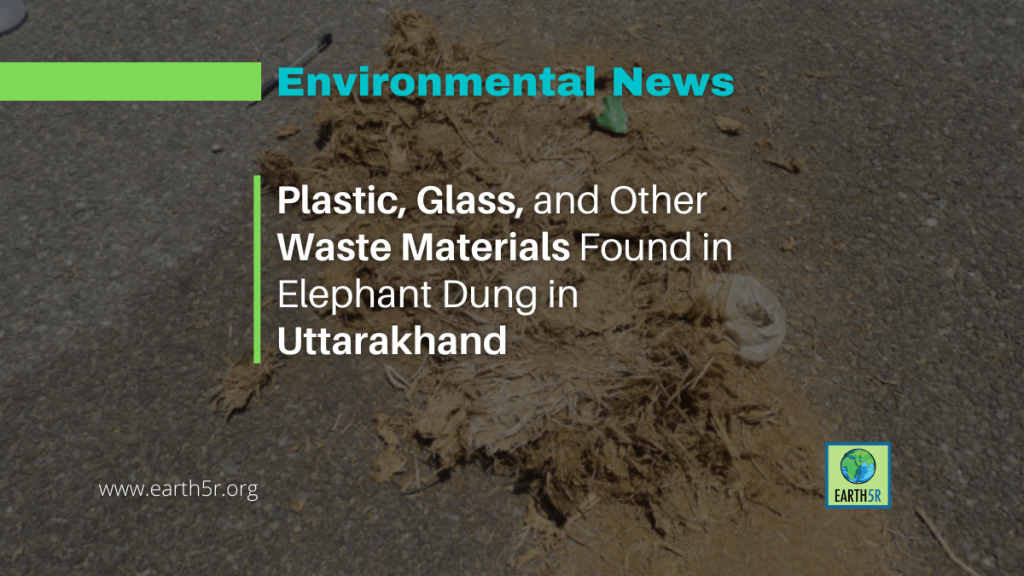
Plastic, Glass, And Other Waste Materials Found In Elephant Dung In Uttarakhand
Environmental News from India:
- Plastic, glass, metal, rubber, and several other anthropogenic waste materials have been detected in elephant dung in Uttarakhand.
- Samples collected from deep within protected areas revealed twice as much plastic as ones from the edges.
- A majority of studies on the presence of plastic in wildlife scat across habitats in India do not look into microplastics yet.
A study published last month in The Journal for Nature Conservation reported the presence of plastic and other human-made materials in elephant dung in the forests of Uttarakhand. The study authors investigated dung samples collected from four sites – three near the Haridwar Forest Division (Laldhang, Gaindikhata, and Shyampur), and one near Lansdowne Forest Division (Kotdwar). Glass, metal pieces, rubber bands, clay pottery, and tile pieces were the other materials that had found their way into pachyderm guts. This is the first systematic documentation that provides incontrovertible proof that elephants ingest non-biodegradable, toxic anthropogenic waste, and that it is moving through their digestive systems.
“It was horrifying to see how much plastic and other nonbiodegradable anthropogenic items were there in the elephant dung,” says Gitanjali Katlam, the main author of the study. She collected this data during her Ph.D. at the Jawaharlal Nehru University (JNU).
“It was not surprising, considering that there have been reports of elephants feeding on garbage dumps near forested areas,” adds Soumya Prasad, who was Katlam’s Ph.D. guide at JNU, and is now a researcher with the Nature Science Initiative. “I feel that this data is just the tip of the iceberg. There isn’t enough research on how much plastic is being ingested by terrestrial animals. Over the last 20 years, there have been many anecdotal reports of plastic in the fecal samples of many species – it’s just that the information is not compiled to provide a wider view of the problem.”
Katlam’s work shows that about one-third of all elephant dung samples collected showed the presence of anthropogenic waste. Roughly 85% of this was plastic (ranging in size from one millimeter to 35 centimeters), with each sample containing on average as many as 35–60 pieces of plastic. The study also found that macroplastics (larger than five millimeters) were more common than microplastics (one to five millimeters).
To read top environmental news from India, please visit https://earth5r.org
Source: Mongabay




